Major Car Dealership Makes Significant Move into LEV’s
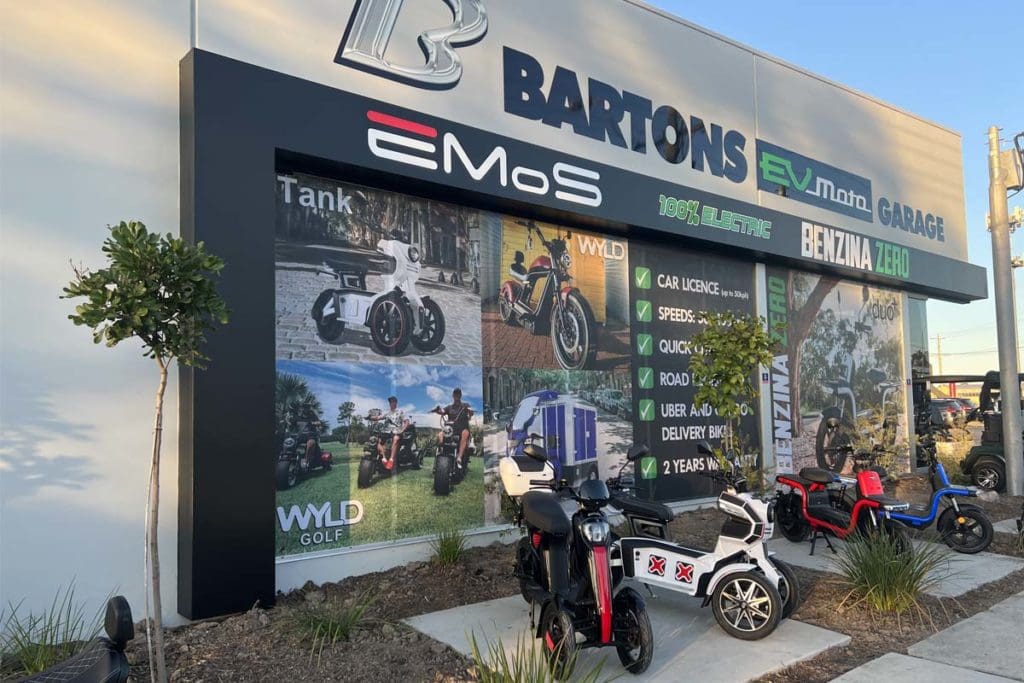
Brisbane, Queensland
Spanning more than 75 years, Bartons Motor Group has steadily grown from a small workshop to one of the largest family-owned car dealerships in Queensland, selling multiple car brands through a range of dealerships.
In many ways, its company history is similar to other car dealerships around Australia, building upon decades as a Holden dealer and gradually adding more international brands in more recently years.
But recently, Bartons Director and major shareholder Mark Beitz decided to take first mover advantage amongst his peers and embrace sales and service of a wide range of LEVs (light electric vehicles).
On 24th June, we visited their brand new Bartons EV Moto Garage which has a prominent location on the busy main road of Capalaba, a south-eastern suburb of Brisbane.
Although the showroom was still being fitted out, it already had an impressive range of stock, displayed to a high standard. There we met Wolfgang Roffmann of EMoS that we’ve previously reported on here and here and Jeff Wuiske who is Sales Manager at Bartons, both for the new EV Moto Garage and for the four Bartons used car sales centres.
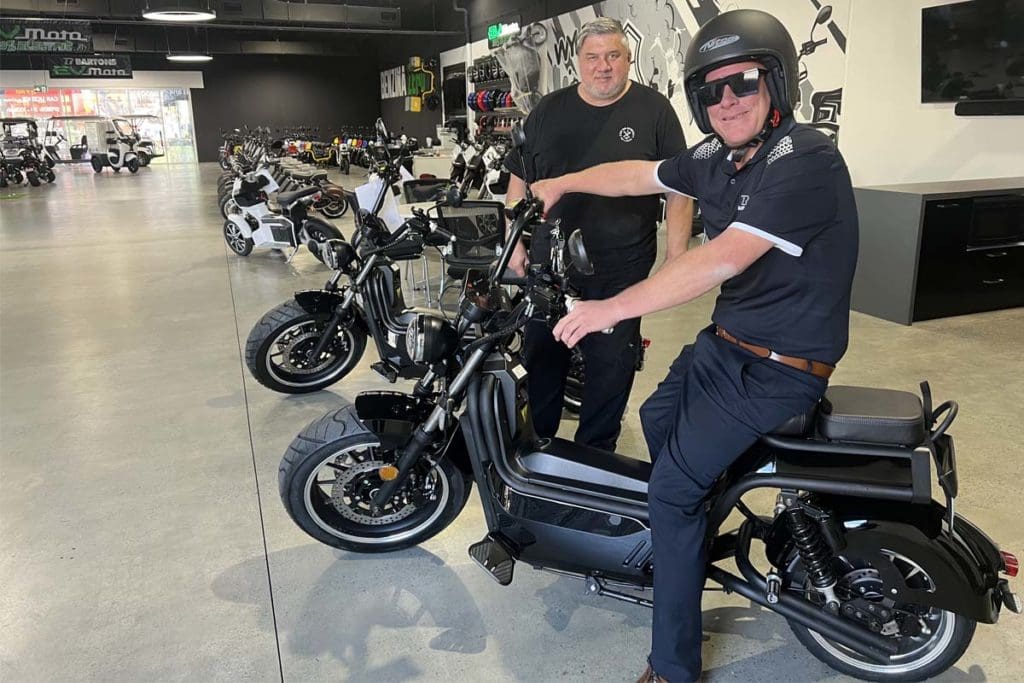
The spacious premises was previously known as Bartons Lifestyle Garage.
“We had European premium used cars in here four weeks ago,” Jeff explained.
“We retail around 6,000 cars per year, but this is our first go at anything like this. We started with golf carts in February and then the opportunity arose from there.”
Wolfgang – whose company is specifying, importing and supplying some of the brands and models that Bartons will be selling – gave an overview of the vehicle types they’re selling initially.
“It’s very specific to lifestyle, neighbourhood vehicles,” he began. “Although the plan is to expand to also have electric bikes and scooters.
“We have targeted three-wheel scooters with fat tyres for resorts and also for golf. These will be the first road-legal golf vehicles in Australia, meaning they can be ridden on the road. With four-wheeled golf carts, you can only get conditional registration that allows you to drive on roads within one kilometre of the golf course.
“You have to register our three-wheelers, but in Qld, SA, WA and the NT you can drive them with a regular car licence at a top speed of 50 kilometres per hour. That’s one of the biggest problems in Australia – every State has its own regulations.
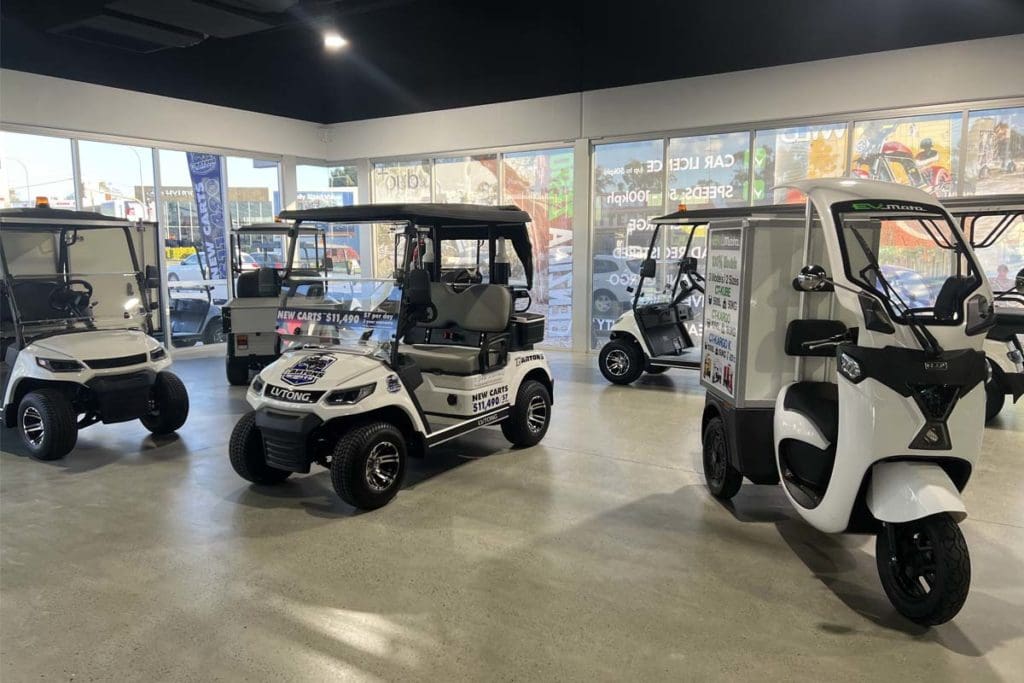
“When you get on to the golf course, you switch it to golf mode and that will limit it to 18 kilometres per hour top speed.
“We have a trial of six of these running at Parkwood Golf Club (on the Gold Coast) as a fleet vehicle. They have telematics to geofence them – not only for stopping them leaving the golf course, but to stop them driving into bunkers and also to limit speed in certain areas to say 10 kph and one area on the 9th hole where there’s a path through the restaurant, where it will cut down to 6 kph.”
How Many Wheels are Best?
Wolfgang explained that there are pros and cons to different vehicle form factors, partly due to government regulations and partly because of other considerations.
“The three-wheeler gives you more stability,” he said. “Golf is very much an ageless sport. You will get people over 70 using these. But our scooters are actually able to tilt, which makes it easier to ride. Our generation three, which arrives in July, will also have a magnetic brake, which means when you get off, it stands still, it won’t roll away.
“The two-wheelers’ advantage is that they’re a little more zippy and if you haven’t got much space in your garage, the two-wheeler might fit more easily, whereas the three-wheeler will take almost as much space as a golf cart.
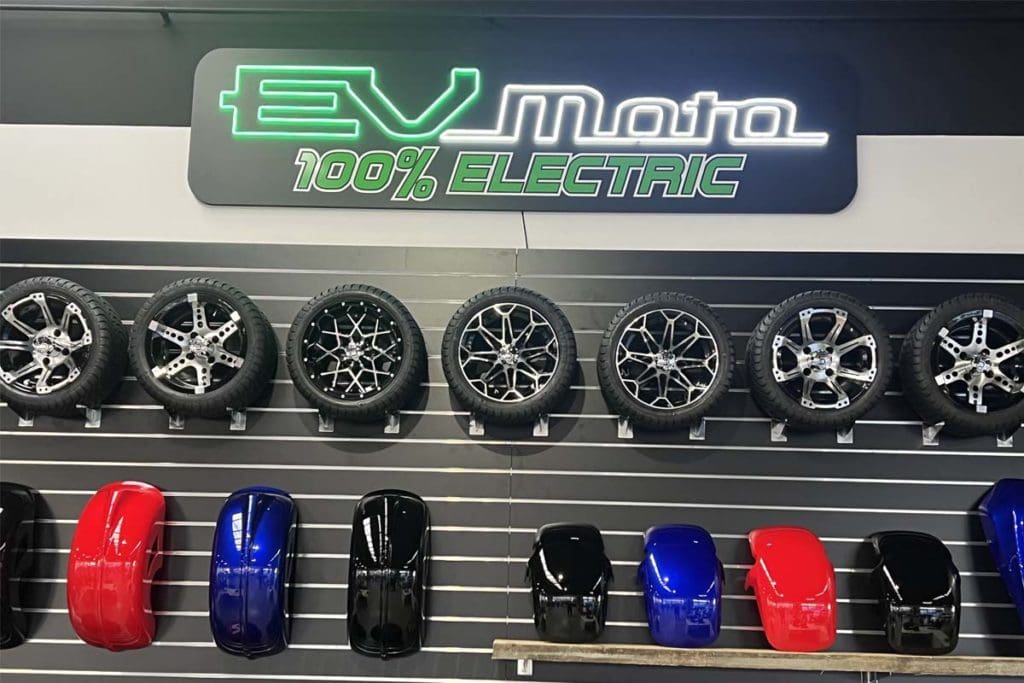
“As for four wheels, we don’t have regulations for quadricycles like they have in Europe. There are some really good micro cars in Europe in this area such as the Renault Twizy, which has been around since 2012. Renault tried to bring this into Australia but they couldn’t. Because it has four wheels, it would have to pass regular car compliance standards, which it can’t.”
Wolfgang’s company, EMoS, imports vehicles under their own EMoS and Wyld brands. They will also be representing Horwin, an upmarket brand originating from Austria, made in China, that makes Vespa-style scooters.
He continued: “Horwin uses a mid-motor, unlike a lot of other brands that use a hub motor. The hub motors are okay up to a certain power and speed. When it gets to higher speeds, you need a geared motor, so you can get more uphill performance, more torque.
“All of our vehicles have battery swap, so you can remove the battery and take it up to your office or wherever to recharge or immediately swap it with a charged battery, if you own two or more batteries.
“But it will be a long time until people can swap batteries at their local service station, just like you can currently do with gas bottles, for example.
“We have too many variations: in voltage and different shapes, sizes and connections and different battery chemistries as well.
“Bartons EV Moto wants to do everything in electric mobility, including e-scooters and e-bikes. They already have electric cars from Hyundai in their car dealerships.
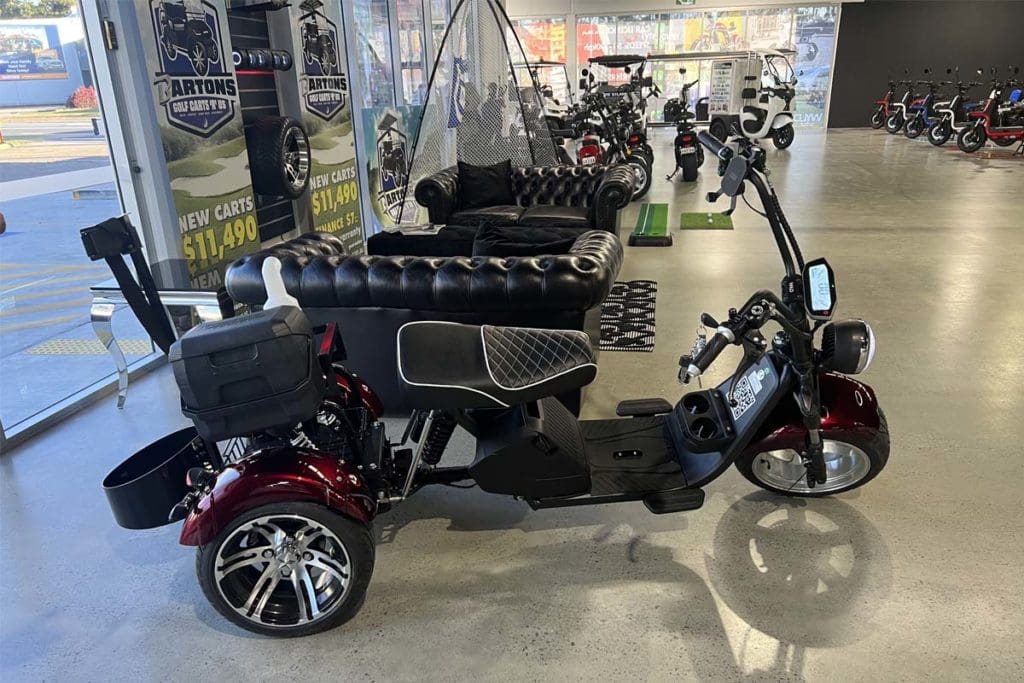
“Being connected to a car dealership, they can do upselling – ‘Do you want fries with that?’ If someone buys a $60,000 car, then another $5,000 on the lease payment for a two or three wheeled e-bike or e-scooter is not much extra.
“You can say, ‘You can keep your car at home for the local trips’. With gasoline prices as high as they are now, it makes more sense.”
Challenges to Overcome
Just because something stacks up economically or environmentally, doesn’t mean it will automatically succeed. So we asked Wolfgang what he sees as the main barriers to sales that they’ll need to overcome.
“I think it’s a matter of education,” he replied. “And we still have what I call ‘battery angst’. Part of that is the price of the battery and people thinking they have to replace it after a couple of years.
“But these batteries last for over 1,000 charge cycles. Even if you were to recharge it every day, you would get three years out of the battery and most of the time they won’t be charged that often.
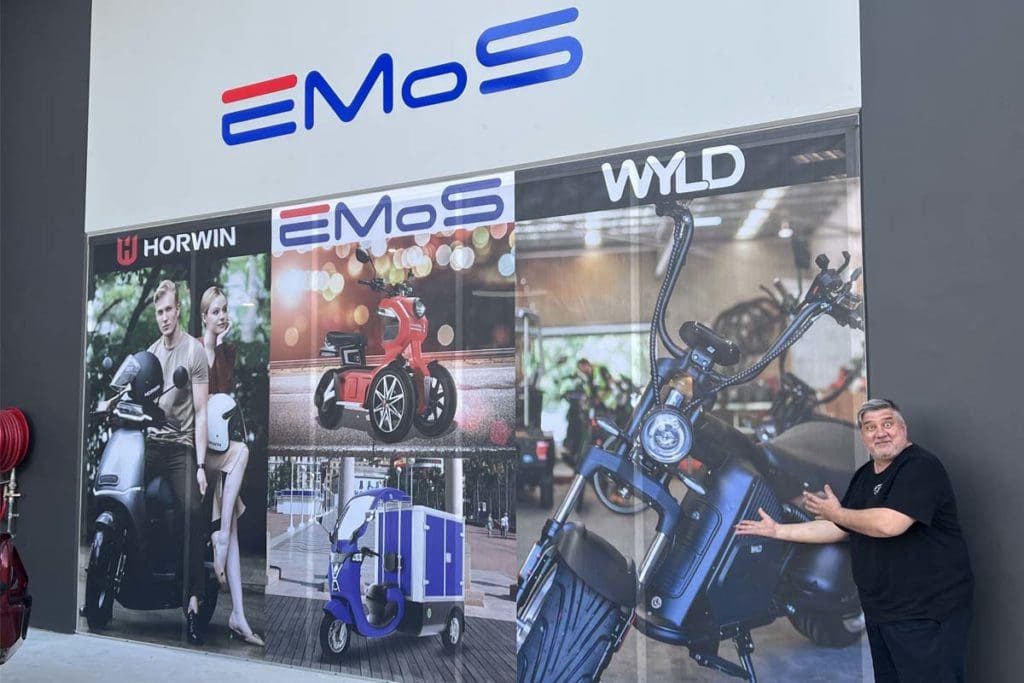
“1,000 charge cycles will give you about 80,000 kilometres. That would be far more than most people would travel, when you think that the average car is only driven 13,000 to 15,000 kilometres per year and these vehicles would usually cover less distance than that.
“Then there’s range anxiety and availability of charging. One business model that might be used is that you don’t own the battery and that we treat the battery as a fuel tank.
“Another limitation is lack of awareness of what’s actually available. Currently people don’t see them. We have to start with more fleets, so we’re working to partner with more delivery companies. You could also see them as vehicles being used in resorts and by hotels as a means of tourists getting around.”
Even in the States where motorcycle licences are currently required to ride some of their new LEVs, Wolfgang still sees a large immediate market.
“There’s 950,000 registered motorcycles in Australia but 2.7 million people who have a motorcycle licence. So there’s an untapped market,” he said.
“Most people who have a motorcycle licence but don’t use it might have ridden at a younger age and maybe we can get some of these people back, on slower, local roads.
“That’s another global trend we’re seeing – the reduction of speed limits in cities. For example, Paris has reduced most of its streets to 30kph. We’re seeing 30kph trials in Australia, in Melbourne and other cities.
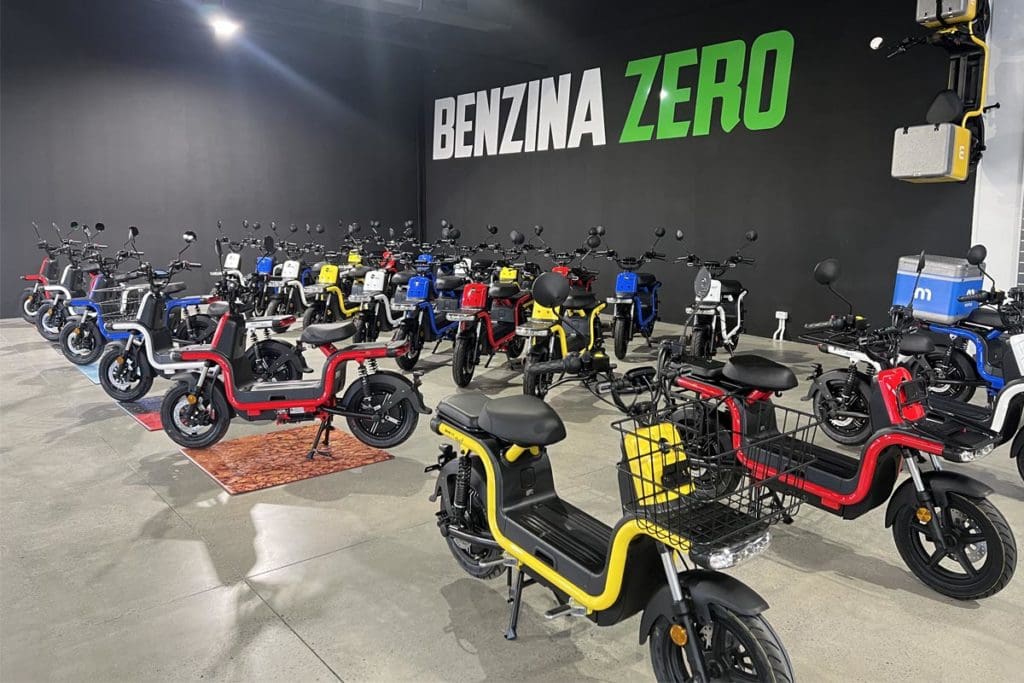
“Not everyone will be happy on an e-bike, particularly for deliveries. e-Commerce has been helped by Covid to find more acceptance. Packages are getting more frequent and going to individuals more than retailers. Customers want to have it yesterday. It used to be two days, then one day, then three hours. Now there’s 10-minute groceries. This requires local hubs, ‘dark stores’ that are closed to the public … we’re just seeing the start of it.
“There’s also pressure from corporations with their ESG (environmental social governance) polices. Everyone wants to be green. Multinationals will say ‘we want to do it all over the world’, including Australia.
“The problem we still have is the initial purchase price difference. The ICE (internal combustion engine) equivalent vehicles are still about half price to buy. But then 100km on an electric scooter might cost $1 in electricity. There are no oil changes, no maintenance except for brake pads and tyres.
“These vehicles would help with congestion, parking – all of these things – but right now there’s subsidies for electric cars but not for these,” Wolfgang lamented.
Meanwhile, Jeff is thinks they’ll be able to make good sales and create a new market for vehicles that comply with the current regulations, despite these regulations needing updating and improvement.
“The three-wheelers retail for $5,990 with the golf buggy carrier attachment and the two-wheelers are $4,990,” he revealed. The golf buggies retail for $11,490. They are speed limited to 25kph.
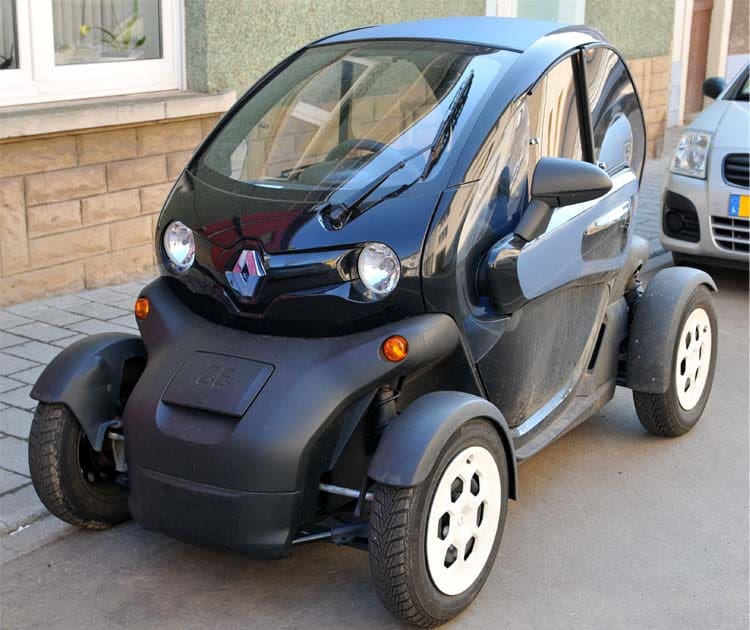
“It’s clearly an industry that’s going to explode. The opportunity to represent products of this stature was too good to walk past.
“I think within 12 months we’ll be selling well over 100 vehicles a month out of here.”
